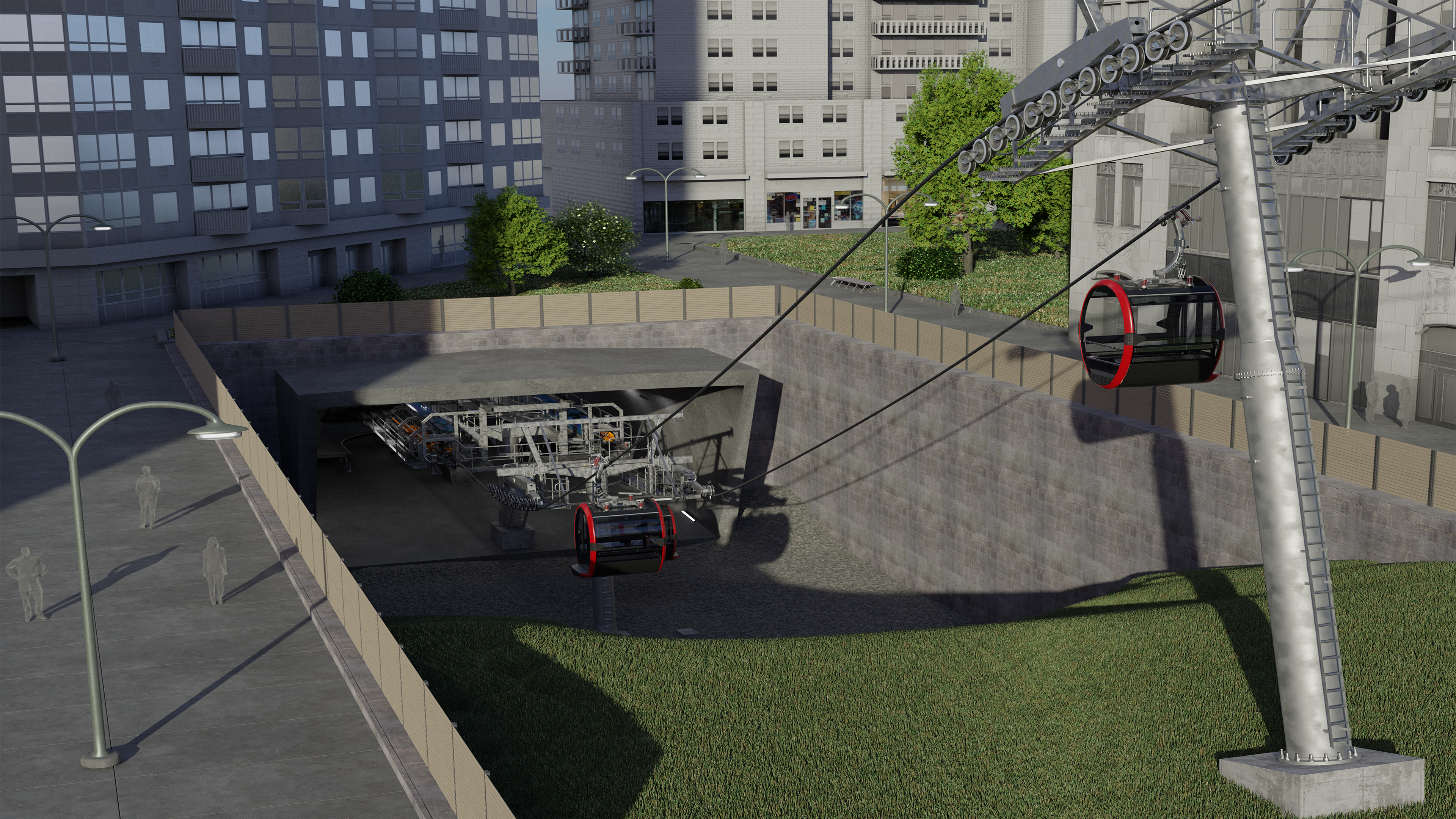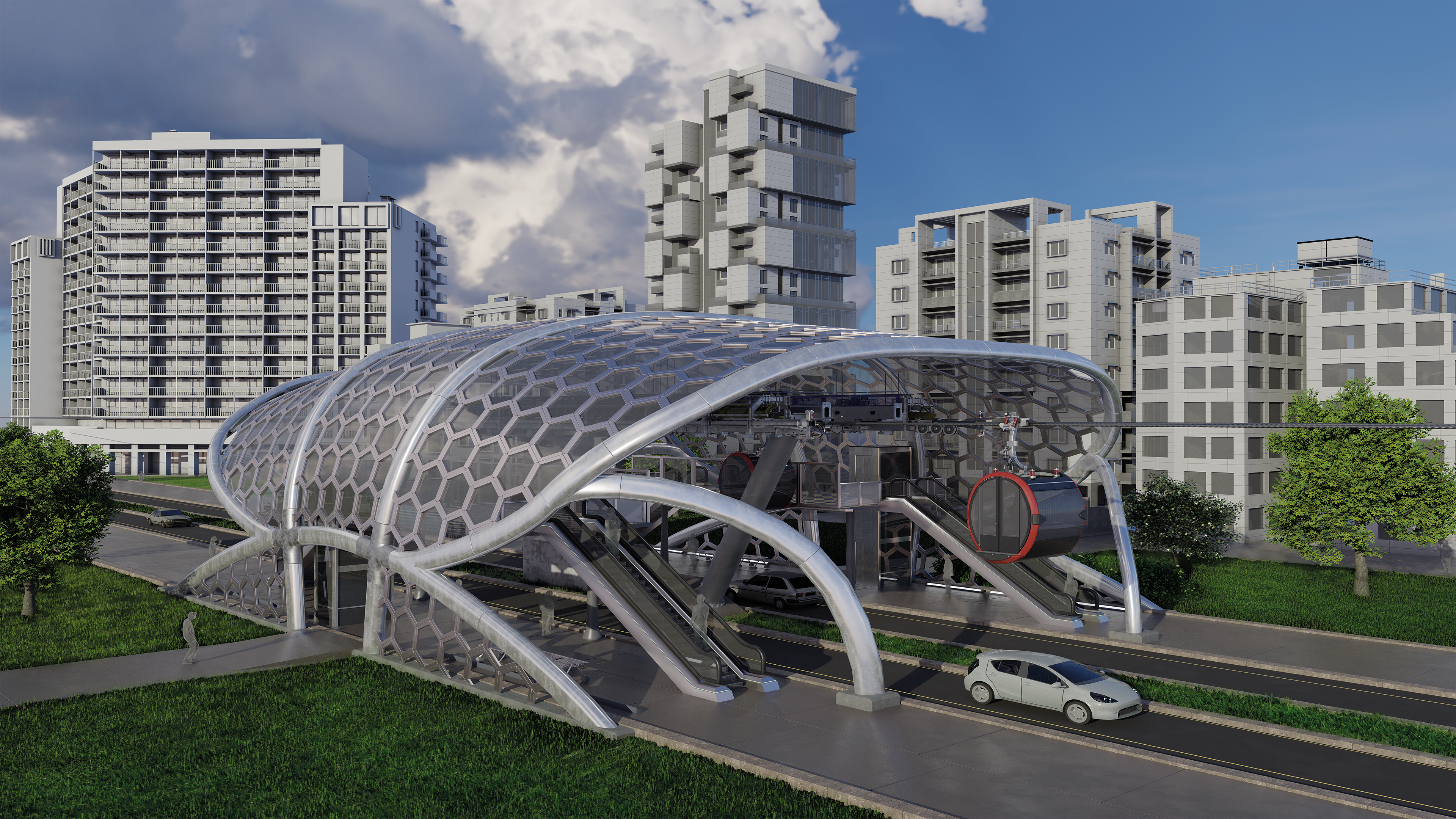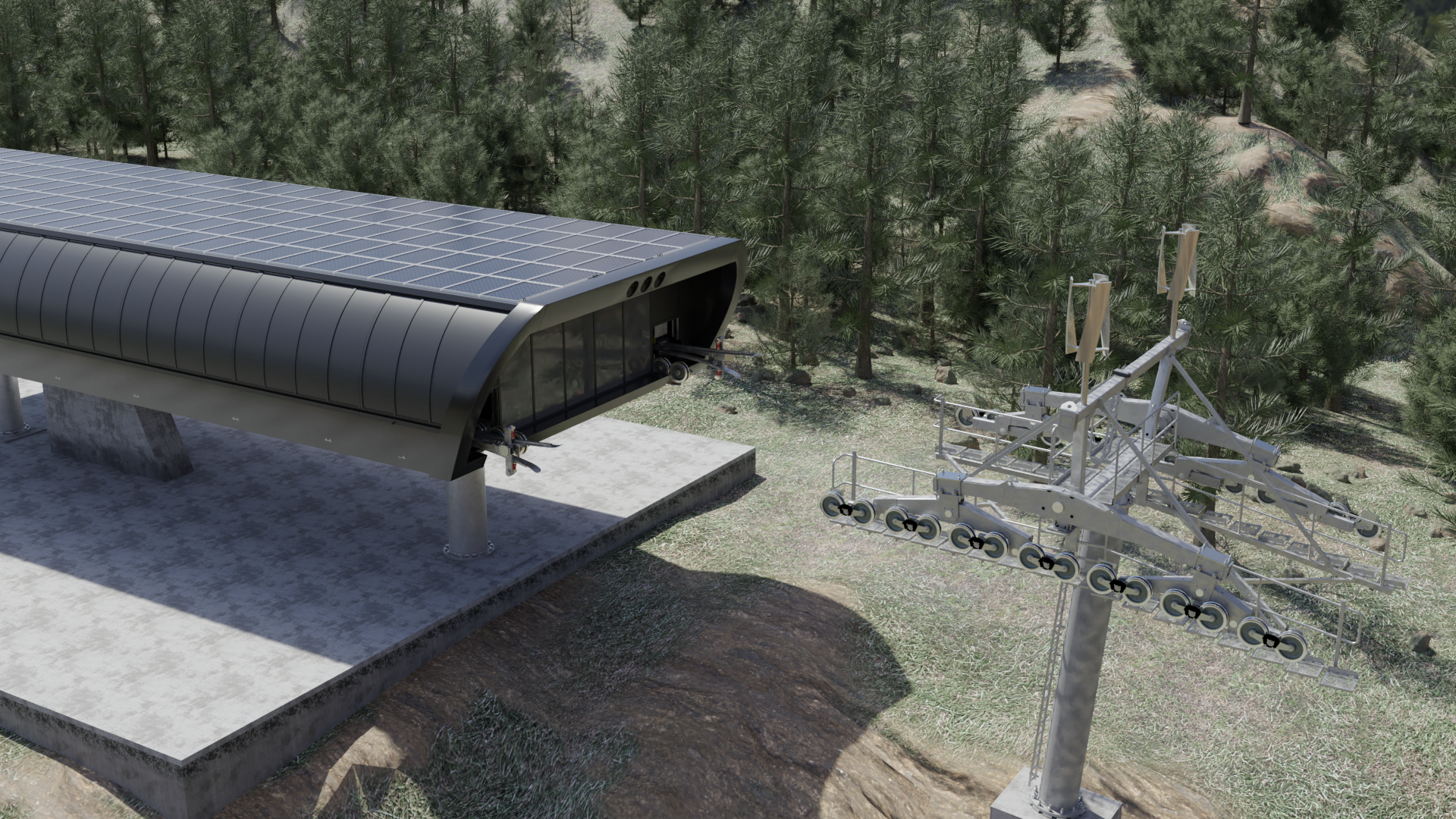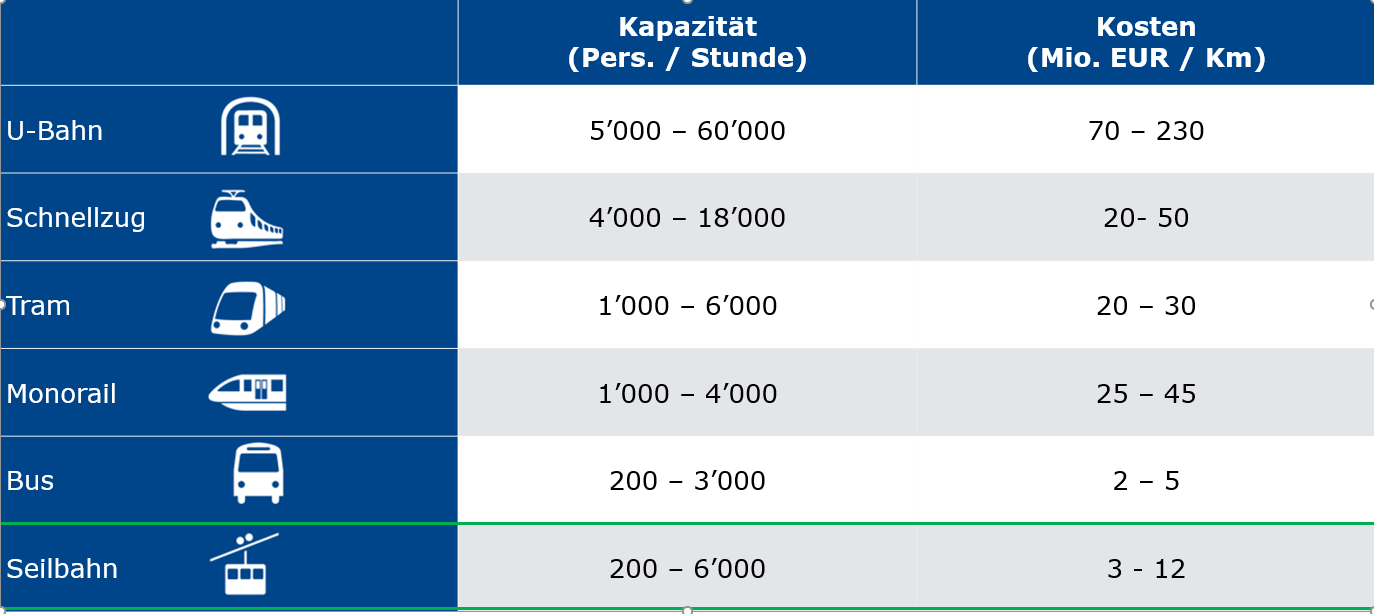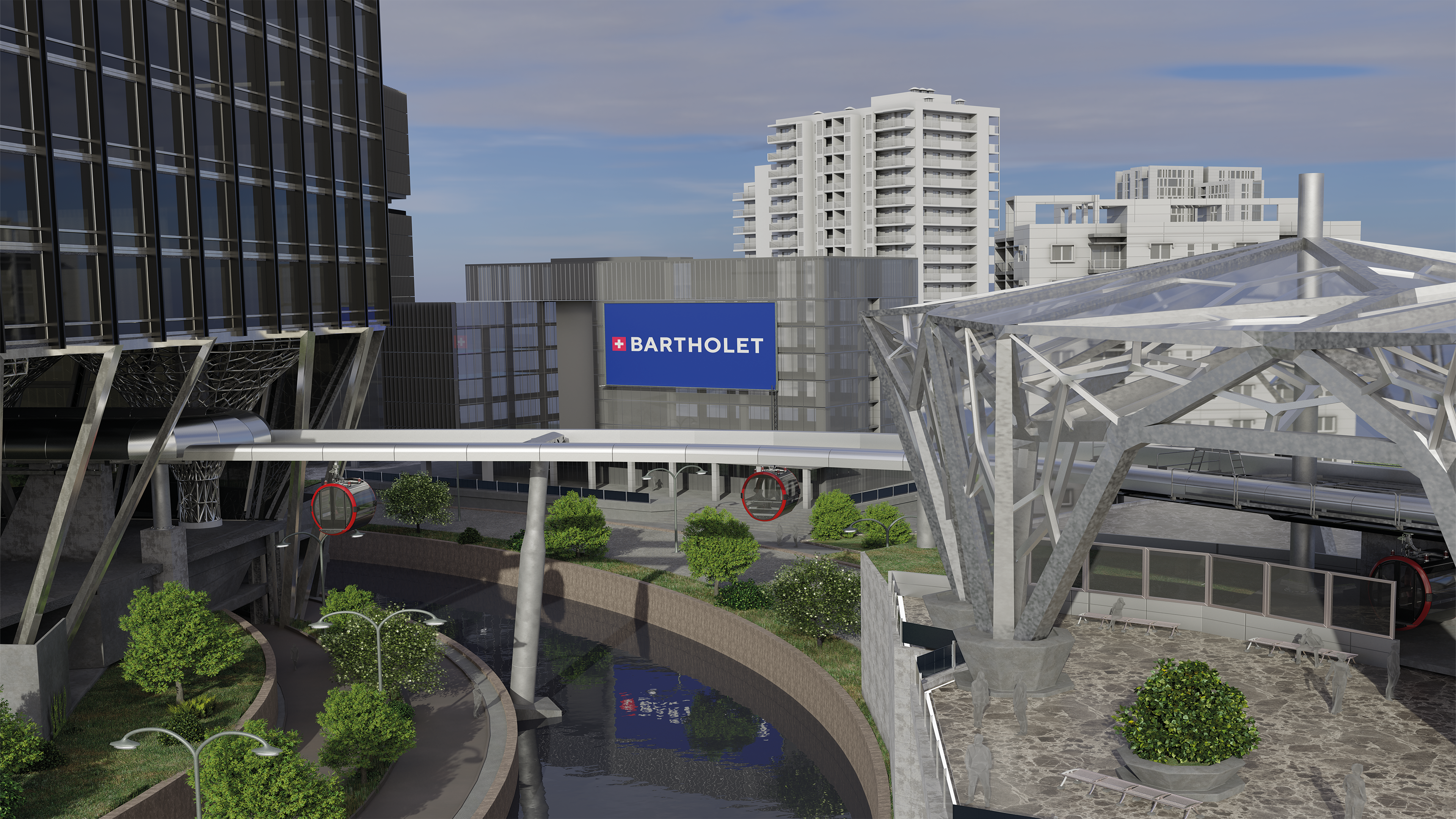
Cities, SI Urban 1/2022, Tourism
Why cable cars belong in the urban sphere
For a transport system to help cities with resolving future mobility issues, it must primarily be versatile and reliable. Probably the most striking aspect is that of congested roads.
Congestion in the morning and evening has long been a part of everyday life for all commuters. Forecasts show that even longer waiting times should be expected in the future, unless an option is found to relieve the strain on the roads.
As cable cars operate on a different level from cars, buses or trams, they are not affected by the delays of additional traffic. In many cases, this saves not only time but also frustration.
Circulating tracks, such as the one in Moscow from Swiss cable car manufacturer BARTHOLET, moreover score points with their continuous flow; gondolas follow at intervals of only a few seconds, without interruption.
This constant operation means that no timetable is required. This means final sprints to reach your desired transport and arrive on time at your destination are therefore no longer necessary, thanks the continuous flow of a cable car.
After boarding, the cable car also scores on user friendliness and comfort; unlike an overcrowded bus, a cable car always has enough seats for the passengers.
“Green” mobility with many years of experience
Awareness of emissions generated in traffic has increased significantly in recent years. More and more people are not only aware of this but also value sustainable transport.
Increasing numbers of cities want to be climate- neutral by 2040. This means great changes in many areas. The mobility sector in particular has a long journey ahead. Daniel Fässer, Head of Sales and Marketing at BARTHOLET, says: “Cable cars have long been treading a sustainable path.
The cable car itself generates no emissions and has been electrically powered since the start. Unlike an electric car, one cable car drive powers all the gondolas. This also saves valuable resources.” The emission-free operation of a cable car is beneficial not only for the environment; it can also keep external costs low, as exhaust fumes also cause dirt, which sticks to façades. With cable cars, the cleaning costs here can be saved. The cable car is also an all- rounder in other respects.
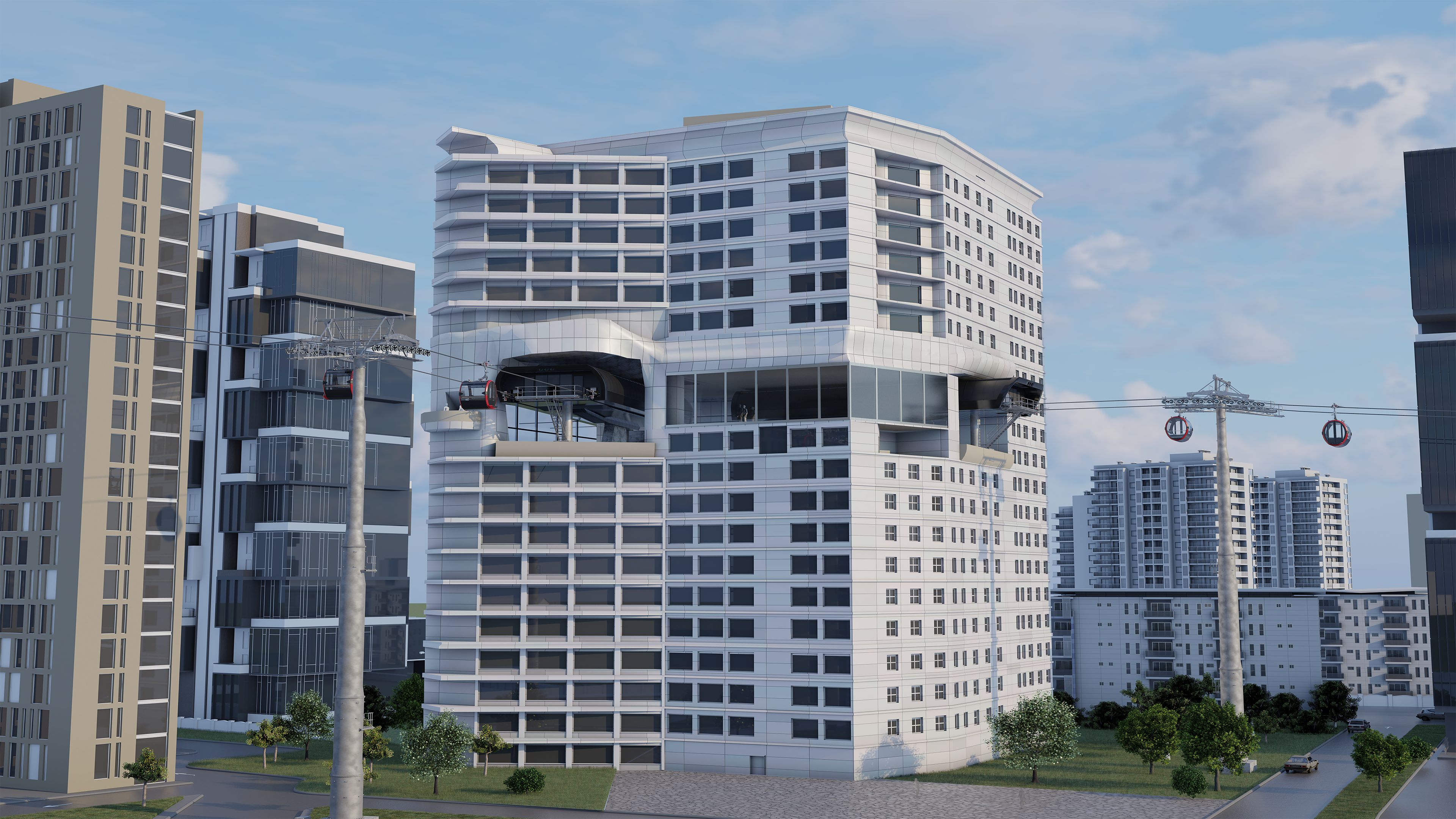
Renewable energy
In the Alpine region, the roofs of cable car gondolas and station buildings have long since been regularly fitted with photovoltaic systems. But it is not only the familiar PV systems that can be combined with cable cars; wind turbines mounted on cable car supports also generate renewable energy.
In addition to solar and wind energy, the waste heat from the cable car drive motor can also be recycled and therefore used. Drive technologies such as the direct drive also contribute significantly to resource-saving operation.
Safety first
Cable cars are one of the safest modes of transport in existence. According to a survey, there are 0.35 incidents per billion kilometres. In itself, this figure is already not high, but if you consider only gondola railways used exclusively in cities, then the figure is significantly lower. Cable layer monitoring elements and regular maintenance guarantee this safety over a long period.
The service life of a cable car is estimated at around 30 years, although many Alpine systems meet all the necessary operating requirements for even longer. In comparison: the expected service life of a bus is of only twelve to fourteen years.
Building is happening now
Forecasts of urbanisation show rapid population growth in the coming years. That also means a stress test for transport. Established urban modes of transport, such as underground railways or tram lines, do have a high transport capacity but their need for track means they take a long time to build and this is associated with accordingly high construction costs (see diagram below).
Depending on location and route length, a cable car could be completed within only a few months after approval and for a fraction of the price of the aforementioned systems.
Effects on tourism
Cable cars are a sustainable, flexible and efficient transport system, which can also make a vital contribution to the change in mobility, if they are used cleverly.
Moreover, systems such as the BARTHOLET urban cable car in Moscow show significant value added for tourism, as the transport system delights passengers with its comfort, accessibility and, of course, unique views. In the Russian capital, the cable car is not only a safe mode of transport but also one of the most popular tourist destinations. Other cities also confirm the positive effects of a cable car on tourism.
